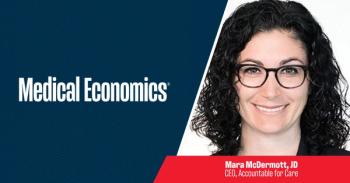
NAACOS outlines improvements for value-based care in rural areas
Value-based care could work for safety-net providers in underserved areas by focusing on increasing access, not just reducing cost.
Value-based care could help patients in rural parts of the nation, but Medicare must change its payment methods for physicians working in those areas.
The National Association of ACOs (NAACOS) outlined its
“Fundamentally, we need a new paradigm where safety-net-minded APMs focus on increasing or maintaining access rather than purely reducing costs,” said the letter from NAACOS President and CEO Clif Gaus, ScD. “While cost is an important component of any APM, we should consider alternatives for maintaining costs or reducing growth in spending. For example, judging ACO performance based on savings achieved compared to their historical spending may not be appropriate for rural populations or lower cost settings.”
NAACOS said the solution is to modify existing APMs to better account for safety net populations or develop new ACO tracks and models focusing on rural and underserved populations.
The five-page letter outlined current issues and potential solutions under four headings.
- Set fair and appropriate financial benchmarks.
There are 460 critical access hospitals (CAHs) participating in MSSP or ACO REACH. Approximately 90% of their costs are fixed, making it difficult to reduce spending, and they can’t be rewarded for lowering utilization.
Rural providers suffer from the “rural glitch” – they are hurt by ACOs’ regional adjustments in benchmarking because they are dominant providers in their markets, so when they lower costs, they also lower spending in their region. Rural providers also don’t teach risk coding, so staff don’t appropriately code patients or patients are sicker than their historic risk scores indicate.
Potential solutions include a global budget or prospective population-base payment for safety net providers to ensure stable and predictable payment. CMS also should remove the high-low revenue designation in MSSP that penalizes safety-net providers.
“The high-low revenue designation is arbitrary and leaves out the very ACOs CMS is trying to attract to the program,” Gaus’ letter said.
- Address unique payment challenges for safety-net providers.
There are more than 4,400 federally qualified health centers (FQHCs) and 2,200 rural health clinics (RHCs). Since 2014, they have used similar national rates for services, adjusted based on where services are provided, while CAHs are reimbursed for costs of delivering services.
“All three face challenges in operating in population-based models because their reimbursement structure makes it difficult to either provide the appropriate care management services, lower the cost of care for their patients, or both,” Gaus’ letter said, with additional examples about payment limitations.
Among the potential solutions, the G0511 primary care management code for safety-net providers could cover 22 services, including remote patient monitoring and chronic care management. Safety-net providers should be allowed to bill for G0511 more than once a month to encourage care management, which Gaus said is critical for success in APMs.
- Define new approaches for aligning patients to total cost of care APMs.
Patients are assigned to ACOs primarily based on where they receive primary care, and must have at least one physician visit a year to qualify for the ACO. Those rules are fundamentally challenging for safety-net providers due to operational structures and reimbursement mechanisms of Medicare, Gaus’ letter said.
A potential solution is to create workarounds for the needed physician visits, with uniqu attribution steps for safety-net providers in ACOs.
- Provide more technical support and flexibility to innovate care.
“It is essential to offer additional flexibilities and tools to safety-net providers so that they innovate care for their patients and lower barriers to participation,” Gaus said.
Those could include Hospital at Home program, which is currently limited by extensive requirements that are a significant obstacle for safety-net providers with limited resources. Another option is improving
Newsletter
Stay informed and empowered with Medical Economics enewsletter, delivering expert insights, financial strategies, practice management tips and technology trends — tailored for today’s physicians.








